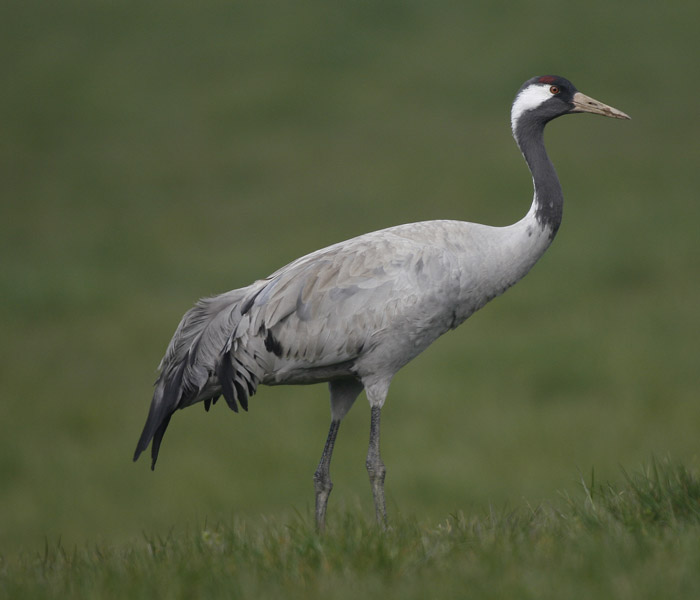Common crane: Red Data Book of Armenia

Cranes - Gruidae
Status. A species of limited distribution and sharply decreasing population in Armenia. Listed in the IUCN Red List of Threatened Species (ver. 3.1) as Least Concern. According to IUCN criteria categorized as Endangered EN D.
Distribution. The range extends from Europe to Central Asia.
Distribution in Armenia. In the past, it was constantly nesting in the Lake Sevan basin, mainly in the Lake Gilli reedbeds. Recently, its nests were found in the Ashotsk, Tavush and Stepanavan districts.
Habitats. Lakes of quite small surface with swampy shorelines covered with reedbeds and other riparian vegetation, and ambient wet meadows.
Biological traits. Returns to Armenia in late March – early April. Nests are made of twigs and dry stems. Two, seldom three, eggs are laid in mid–April to early May. Sometimes, the second clutch is laid in early May. Hatchlings emerge in late May – early June and are looked after by both parents. In the second half of July fledglings start to fly. The autumn migration begins in late August and continues until mid–October.
Population size and its trends. Every year, 4–5 in the Tavush and 2 in the Stepanavan districts. In total, the number of breeding pairs in Armenia is about 10 pairs.
Major threats. The population is affected by the drainage of wetlands and the intensive use of meadows as pasture grounds.
Conservation measures. Protected in Sevan and Arevik National Parks. It is essential to apply conservation measures to the nesting sites in the Ashotsk, Tavush and Stepanavan districts.
Suggestions
 The Ministry of Environment sent a letter international partners to draw their attention to the real danger of environmental disasters as a result of Azerbaijan's large-scale aggression towards the territory of Armenia
The Ministry of Environment sent a letter international partners to draw their attention to the real danger of environmental disasters as a result of Azerbaijan's large-scale aggression towards the territory of Armenia
 Vicia pisiformis: Red Data Book of Armenia
Vicia pisiformis: Red Data Book of Armenia
 Vavilovia formosa: Red Data Book of Armenia
Vavilovia formosa: Red Data Book of Armenia
 Trigonella capitata: Red Data Book of Armenia
Trigonella capitata: Red Data Book of Armenia
 Trigonella astroides: Red Data Book of Armenia
Trigonella astroides: Red Data Book of Armenia












